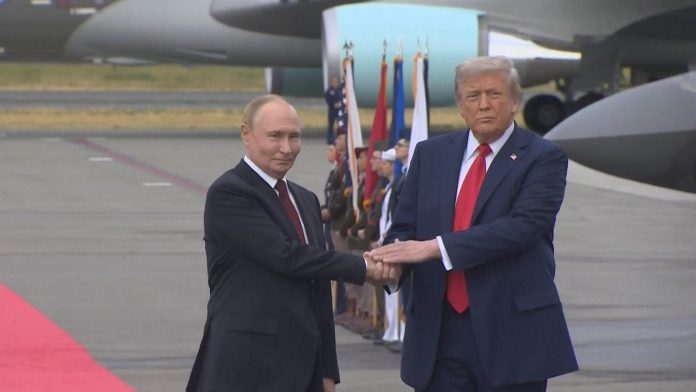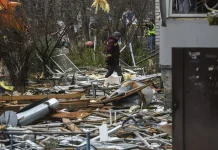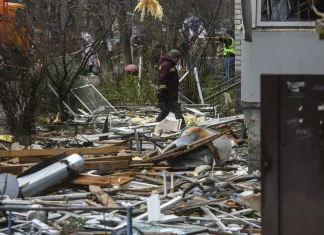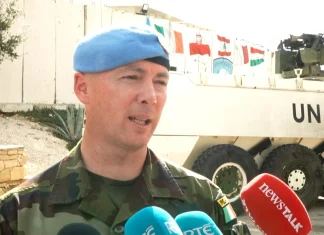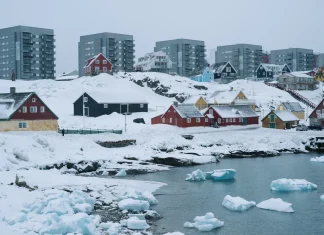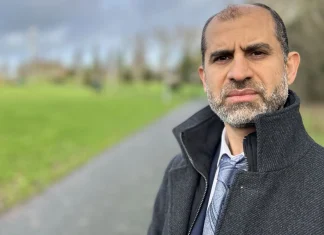A Fragile Dance on Frozen Ground: Inside the Biden-Trump Diplomatic Gambit to End the War in Ukraine
It has been nearly a week since the world watched with bated breath as then-US President Donald Trump met Russian President Vladimir Putin in the chilly sprawl of Alaska. The promise of peace hung heavy in the air, reverberating through global news cycles and stirring hopes for a resolution to the devastating conflict in Ukraine.
And yet, in the cold light of day, the war drums continue to echo, the violence rages on, and a hardened geopolitical impasse remains firmly entrenched. What happened behind that icy summit? Why has this supposed breakthrough failed to calm the storm clouds over Eastern Europe? For those following international affairs, and those yearning for peace, the answers reveal a complex, often troubling dance of diplomacy—one punctuated by uncertainty, strategic obfuscation, and conflicting narratives.
The Alaska Summit: A Dramatic Diplomatic Pivot
Just days before the meeting, the world’s gaze was locked on Washington’s insistence: a ceasefire was non-negotiable, the foundational step toward any lasting peace in Ukraine. This was a policy embraced by Kyiv and echoed across Europe’s corridors of power. Observers were bracing for an unwavering stance by the United States, a beacon leading the charge for conflict de-escalation.
So imagine the global surprise when President Trump, in a dramatic pivot, publicly shelved the ceasefire demand. Instead, he shrugged off this cornerstone for a more direct leap into peace talks—talks Russia adamantly championed from the start. It was a move that stunned allies and analysts alike.
Steve Witkoff, the US Special Envoy present at the summit, described a curious, historic concession by the Russian delegation: a tentative nod to the idea of Western security guarantees for Ukraine—something akin to NATO’s Article 5 principle, which treats aggression against one member as an attack on all. “Game-changing,” he called it.
The prospect of security guarantees could, in theory, provide Kyiv with a much-needed umbrella against future Russian aggression. It suggested a crack, however small, in the Kremlin’s ironclad position.
Putin’s Persistent Territorial Demands
Yet, in the same breath, President Putin doubled down on his uncompromising stance, demanding that Ukraine surrender roughly one-fifth of its territory—specifically the regions surrounding Donetsk, where Ukrainian forces still hold ground.
Sergei Petrov, a local journalist in Donetsk, captured the mood on the ground: “People here feel abandoned, as if their homes are bargaining chips in a game beyond their reach. The idea of ceding any more land to Russia is inconceivable.”
The stark contrast between Russia’s territorial demands and its alleged willingness to entertain Western security guarantees exposes a diplomatic dichotomy—a tantalizing offer coupled with a hardline red line.
Europe Steps Up Amid Ambiguity
With America wavering, European leaders seized the moment to clarify what these newly floated security guarantees might entail. During a White House meeting with Ukrainian President Volodymyr Zelensky and European heads of state, President Trump assured, “European nations are going to take a lot of the burden. We’re going to help them and make it very secure.”
Though Trump explicitly ruled out the deployment of American ground forces, he hinted at potential air support, saying on Fox News, “We’re willing to help them with things, especially, probably by air.”
Meanwhile, Kyiv remained cautious if not downright skeptical. Volodymyr Dubovyk, Director of the Centre of International Studies at Odesa Mechnikov National University, shared a sobering truth: “No one in Ukraine is optimistic about security guarantees, really, because we don’t know what would happen. It’s all very vague. We’re waiting to see what ‘help’ really looks like.”
The palpable uncertainty on the Ukrainian side underscored the fragile nature of the talks. Meanwhile, Ireland’s Taoiseach Micheál Martin voiced his country’s readiness to contribute an international peacekeeping force under United Nations auspices—a testament to the broader global desire to stabilize the region.
The Kremlin’s Houdini Act: Backpedaling on Promises
What initially seemed like a potential breakthrough quickly unravelled. By midweek, Russian Foreign Minister Sergey Lavrov shifted his tone sharply. He insisted Russia must have a say—and, more alarmingly, a veto—over any security guarantees extended to Ukraine. Without Moscow’s blessing, such guarantees would be effectively neutered.
Lavrov also restated Russia’s steadfast opposition to the deployment of Western troops in Ukrainian territory, undercutting European plans for a reassurance force often touted as a cornerstone of post-war security.
It was a classic Kremlin maneuver—present something palatable or even progressive, then slowly entangle its meaning in conditions that strip it of real substance. In diplomatic circles, insiders described it as a “Houdini act,” a trick of strategic ambiguity designed to buy time and keep opponents guessing.
What Has Trump’s Alaska Gambit Achieved?
In hindsight, tangible results from the Alaska talks are frustratingly elusive. Trump’s abandonment of the ceasefire-first approach—a stance he championed leading up to the summit—left many wondering whether he had ceded too much ground to Russia.
The summit failed to yield clear parameters for security guarantees. Nor did it renew or intensify the already punishing sanctions on Moscow or lay the groundwork for direct talks between Putin and Zelensky, a prospect Trump publicly claimed to be pursuing.
Yet, on the diplomatic chessboard, Putin remains firmly ensconced, showing no eagerness to sit face-to-face with his Ukrainian counterpart. Kremlin officials quickly dismissed the idea of a summit, sending mixed signals about Russia’s readiness for top-level dialogue.
Sanctions: The Lingering Leverage
Back in Washington, Trump warned that if progress towards peace stalled, sanctions on Russia—particularly targeting its oil exports—would come swiftly. The calculus for sanctions is clear: economic pressure could either compel Russia to negotiate in good faith or push it further into defiance.
Dubovyk, the Ukrainian expert, underlined the stakes: “In this conflict, weapons are crucial. But sanctions may be even more important because they bite at Moscow’s economic lifeline.”
Yet, the tepid approach and mixed signals out of Washington raise an urgent question: is the United States fully leveraging its economic might to bend Russia toward peace? Without a firmer hand, the Kremlin may feel emboldened to prolong its military campaign indefinitely.
The Human Toll: What Lies Beneath the Headlines
While diplomats joust over security guarantees and political calculations, the war grinds mercilessly on, with innocent civilians paying the highest price. This week alone, drone strikes and missile attacks devastated cities and towns across Ukraine.
Olena, a mother from Kharkiv, shared through tears, “Every night we huddle in the basement, listening to explosions. We don’t talk about peace anymore; we just dream of surviving the next dawn.”
The human cost wounds far deeper than any headline—thousands dead, millions displaced, families torn apart. The diplomatic wrangling must never lose sight of this reality.
Reflections: Where Do We Go From Here?
As readers around the globe, perhaps you share the profound frustration with the frozen state of US-Russian negotiations. The Alaska summit was meant to thaw the conflict, or at least light a spark toward peace. Instead, it revealed the complexities and contradictions of modern geopolitics—an intricate web where idealism collides with realpolitik.
What does this mean for the future? Can international diplomacy break free from stalemate, or will the Ukrainian people be condemned to perpetual uncertainty, living in the shadow of war? And what lessons does this episode offer about the limits of power, the role of truth, and the enduring human yearning for peace?
As the next chapter unfolds, the world watches, hopes, and waits to see if cooler heads will prevail before the cost of inaction grows unbearably high.
In Closing: The Long Game of Peace
The Alaska meeting, far from settling the war in Ukraine, exposed the delicate, often perilous nature of peacemaking in the 21st century. Dramas play out not just in battlefields but in boardrooms, backchannels, and speeches that can shift the course of history with a few words.
To truly push forward, the United States, Europe, and the global community must reconcile ambition with clear-eyed pragmatism—fortifying support for Ukraine without surrendering the demands for justice and respect for sovereignty.
In the end, peace is not a neat deal signed over three hours in a conference room. It is a difficult, enduring process requiring courage, patience, and above all, an unwavering commitment to the human lives forever changed by war.


